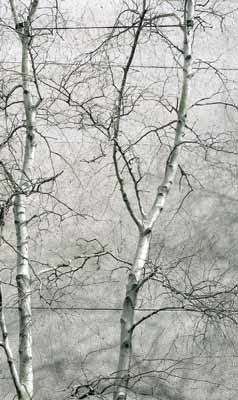Classification System: APG IV
Superregnum: Eukaryota
Regnum: Plantae
Cladus: Angiosperms
Cladus: Eudicots
Cladus: Core eudicots
Cladus: Rosids
Cladus: Eurosids I
Ordo: Fagales
Familia: Betulaceae
Subfamilia: Betuloideae
Genus: Betula
Subgenus: Betula subg. Betula
Sectio: Betula sect. Betula
Species: Betula populifolia
Name
Betula populifolia Marshall, Arbust. Amer.: 19 (1785).
Synonyms
Homotypic
Betula lenta var. populifolia (Marshall) Castigl., Viagg. Stati Uniti 2: 207 (1790).
Betula alba var. populifolia (Marshall) Spach, Ann. Sci. Nat., Bot., sér. 2, 15: 187 (1841).
Betula alba subsp. populifolia (Marshall) Regel, Bull. Soc. Imp. Naturalistes Moscou 38(2): 399 (1865).
Heterotypic
Betula excelsa var. canadensis Wangenh., Beytr. Teut. Forstwiss.: 86 (1787).
Betula acuminata Ehrh., Beitr. Naturk. 6: 98 (1791).
Betula populifolia var. laciniata Loudon, Arbor. Frutic. Brit. 3: 1707 (1838).
Betula populifolia var. pendula Loudon, Arbor. Frutic. Brit. 3: 1707 (1838).
Betula cuspidata Schrad. ex Regel in A.P.de Candolle, Prodr. 16(2): 164 (1868), pro syn.
Betula populifolia purpurea Ellw. & P.Barry, Nursery Cat. (Ellwanger & Barry) 1892: 53 (1892).
Betula populifolia var. purpurea (Ellw. & P.Barry) Rehder in L.H.Bailey, Cycl. Amer. Hort. 1: 159 (1900).
Betula populifolia f. laciniata (Loudon) in H.G.A.Engler, Pflanzenr., IV, 61: 80 (1904).
Betula populifolia f. pendula (Loudon) H.J.P.Winkl. in H.G.A.Engler (ed.), Pflanzenr., IV, 61: 80 (1904).
Betula populifolia f. purpurea (Ellw. & P.Barry) C.K.Schneid., Ill. Handb. Laubholzk. 1: 112 (1904).
Betula populifolia f. incisifolia Fernald, Rhodora 47: 304 (1945).
Distribution
Native distribution areas:
Northern America
Eastern Canada
New Brunswick, Nova Scotia, Ontario, Prince Edward I., Québec
North-Central U.S.A.
Illinois
Northeastern U.S.A.
Connecticut, Indiana, Maine, Massachusetts, New Hampshire, New Jersey, New York, Ohio, Pennsylvania, Rhode Island, Vermont
Southeastern U.S.A.
Delaware, Maryland, North Carolina, South Carolina, Virginia
References: Brummitt, R.K. 2001. TDWG – World Geographical Scheme for Recording Plant Distributions, 2nd Edition
References
Ashburner, K. & McAllister, H.A. 2013. The genus Betula: A taxonomic revision of birches (A Botanical Magazine Monograph). Royal Botanic Gardens, Kew, 431 pp., ISBN 978-1-84246-141-9. Reference page.
Stritch, L., 2014. Betula populifolia. The IUCN Red List of Threatened Species 2014. IUCN Red List Category: (Least Concern). DOI: 10.2305/IUCN.UK.2014-3.RLTS.T194635A2354478.en. Reference page.
Wang. N., McAllister, H.A., Bartlett, P.R. & Buggs, R.J.A. 2016. Molecular phylogeny and genome size evolution of the genus Betula (Betulaceae). Annals of Botany 117(6): 1023–1035. DOI: 10.1093/aob/mcw048 Reference page.
Govaerts, R. et al. 2019. Betula populifolia in World Checklist of Selected Plant Families. The Board of Trustees of the Royal Botanic Gardens, Kew. Published online. Accessed: 2019 February 12. Reference page.
International Plant Names Index. 2019. Betula populifolia. Published online. Accessed: 12 February 2019.
Vernacular names
Deutsch: Pappelblättrige Birke, Grau-Birke
English: Gray Birch
Esperanto: Poplofolia betulo
suomi: Poppelikoivu
Türkçe: Kavak yapraklı
Betula populifolia (gray or grey birch) is a deciduous tree native to eastern North America.
Range
It ranges from southeastern Ontario east to Nova Scotia, and south to Pennsylvania and New Jersey, with disjunct populations in Indiana, Virginia, and North Carolina. It prefers poor, dry upland soils, but is also found in moist mixed woodlands. Living only about 30 years, it is a common pioneer species on abandoned fields and burned areas. It is possibly extirpated in Delaware.
Characteristics
Gray birch grows quickly to 20 to 30 feet (6.9 to 9.1 m) tall and 15 inch (38 cm) trunk diameter, with an irregular open crown of slender branches. The tree often has multiple trunks branching off an old stump. The leaves are 2 to 2.7 inches (5-7 cm) long by 1.6 to 2.4 inches (4-6 cm) wide, alternately arranged, ovate, and tapering to an elongated tip. They are dark green and glabrous above and paler below, with a coarsely serrated margin.[2] The bark is chalky to grayish white with black triangular patches where branch meets trunk. It is most easily confused for the paper birch (Betula papyrifera) by means of its bark; it is smooth and thin but does not readily exfoliate like paper birch does. The flowers are wind-pollinated catkins 5–8 cm long, the male catkins pendulous and the female catkins erect. The fruit, maturing in autumn, is composed of many tiny winged seeds packed between the catkin bracts.
The wood is medium hard and is used for high grade plywood, furniture, drum shells, spools and firewood.
Like other North American birches, gray birch is highly resistant to the bronze birch borer (Agrilus anxius).[3] The leaves of the gray birch serve as food for various Lepidoptera, such as the leaf miner moth Cameraria betulivora. Between about 1930 and 1950, many gray birch trees, along with paper birch and yellow birch (Betula alleghaniensis), were affected and killed by birch dieback disease.[4]
Gray birch has been commonly planted as a landscaping tree in southern Pennsylvania and New Jersey as it tolerates heat and humidity better than paper birch and is more resistant to bronze birch borers and leaf miners.
Gallery
Betula populifolia leaves, New Brunswick, Canada
Betula populifolia bark, Vermont, US. Although the grey birch exhibits a smooth, thin white bark which can easily be confused with that of the paper birch (Betula papyrifera), it does not readily exfoliate.
References
Stritch, L. (2014). "Betula populifolia". IUCN Red List of Threatened Species. 2014: e.T194635A2354478. doi:10.2305/IUCN.UK.2014-3.RLTS.T194635A2354478.en. Retrieved 18 November 2021.
Hardin, James W., Donald Joseph Leopold, and Fred M. White. Harlow & Harrar's Textbook of Dendrology. Boston: McGraw-Hill, 2001. Print.
Nielsen, David G., Vanessa L. Muilenburg, and Daniel A. Herms. "Interspecific Variation in Resistance of Asian, European, and North American Birches (Betula Spp.) to Bronze Birch Borer." Environmental Entomology 40.3 (2011): 648-53. BioOne. Web. 25 Sept. 2013.
Ciesla, William M.; Donaubauer, Edwin (1994). Decline and Dieback of Trees and Forests: A Global Overview. Food & Agriculture Org. pp. 18, 698. ISBN 978-92-5-103502-3.
Retrieved from "http://en.wikipedia.org/"
All text is available under the terms of the GNU Free Documentation License


